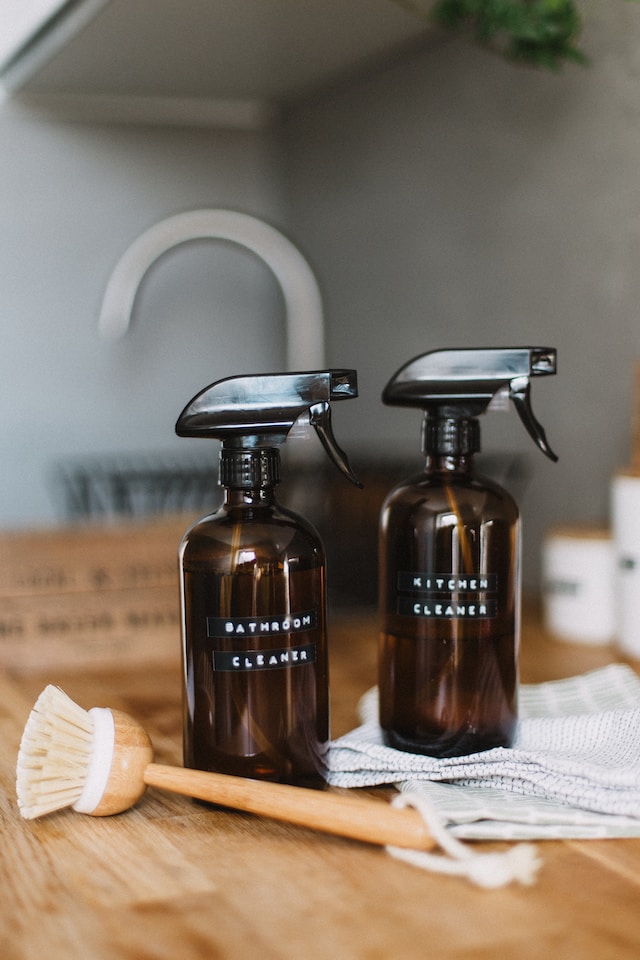Ants in the bathroom can be a frustrating and unsanitary problem, contaminating surfaces and food items with their waste. But these pests aren’t the sole residents of your pantry; they’ll sneak inside your bathroom too!
Because ants are highly adaptive creatures, it’s difficult to eliminate their ranks. Simply wiping them away or using over-the-counter sprays may not solve the problem.
Want to learn how to get rid of ants in your bathroom? Take a look at our blog, where we’ll explore some effective elimination methods and figure out why these pests may have invaded your space!
Why You May See Ants Indoors
With their advanced communication skills and impressive teamwork, ants have managed to thrive in nearly every corner of the world. But as remarkable as they may be in the wild, ants are a nuisance when they invade our homes.
Ants can sneak indoors through small cracks and crevices around windows and doors. Because of their remarkable ability to detect minuscule openings, they can quickly infiltrate an area for food and water.
If these foraging scouts find signs of a ready food source, they’ll leave a trail of pheromones behind them so other ants can follow their lead.
Like other insects, ants can also hitchhike on items we bring indoors, like potted plants, flowers, or firewood. These pests are incredibly small and can quickly go unnoticed on these items, which makes it easy for them to enter our homes undetected.
Some species of ants prefer to build their nests indoors, particularly in warm, humid areas like bathrooms and kitchens. However, it’s unlikely that you’ll experience a full-blown infestation if you accidentally carry them indoors. Instead, they’re more likely to invade for food or to find shelter.
Besides building inside walls and underneath the flooring, you can typically find their hidden nests in hidden spaces under appliances.
Regardless of how ants find their way inside, preventing them from entering your home is essential. No one wants a pest infestation, especially in spaces you want to keep clean, like your bathroom and kitchen!
Why Are Ants in my Bathroom?
Before we figure out how to get rid of ants in your bathroom, let’s figure out what draws them to this location in the first place!
Bathrooms are damp and humid, creating the perfect environment for some ants. Steady sources of moisture, like leaks or standing water, can provide ants with the water they need to survive.
Plus, some ants aren’t too picky about their next meal. While it’s unlikely they’ll feast on your bathroom supplies, you could find them fighting over sweet toothpaste, organic soaps, or lingering pests that may stick around like silverfish.
If your bathroom is near your kitchen or if you have pet food or waste in your bathroom, your lavatory could become a popular spot for ants. These pests may already be present indoors and branching out to other areas or checking out what animal byproducts you have stored.
Once foraging ants have found a food source, either inside your bathroom or in the area nearby, they’ll create chemical signals encouraging other ants to come indoors. Once they invite the whole family in, you’ll, unfortunately, see a steady stream of ant traffic lingering inside.
How to Get Rid of Ants in Your Bathroom
Ants invading your bathroom can be an annoying and frustrating problem. They come out of nowhere, marching in lines across your counters, floors, and shower walls. But fear not; there are ways to eliminate these pesky pests and reclaim your bathroom!
First, identify the type of ant you are dealing with, as different species require different treatment methods. Once you have identified the species, you can take the appropriate steps to eliminate them.
Ant baits are an effective method to remove ants from your bathroom. You can use storebought options or create some yourself using sugar and honey. Whatever you choose will entice the ants to consume and carry it back to the colony to get rid of the rest of the ants.
Natural ant repellents, like vinegar or peppermint oil, can also help keep ants away from specific spaces. You can easily create a mixture with vinegar or peppermint oil in water, add this to a spray bottle, and place it in areas where ants enter your bathroom.

Prevention is also crucial in avoiding ant infestations in your bathroom. Seal up around windows, doors, and pipes, as ants can enter through these openings. Additionally, keep any standing water in your bathroom to a minimum, as ants are attracted to moisture.
Here’s an article to help you deal with a leaky faucet in your bathroom!
Using a combination of these methods, you can effectively eliminate ants in your bathroom and prevent future infestations. Remember, the key is to act quickly and consistently to eliminate these pests.
So, still curious about how to get rid of ants in your bathroom?
When you have ants in your bathroom, it can be tempting to handle the problem independently. However, it’s important to remember that these pests can be challenging to eliminate without professional help.
proof. Pest Control technicians have the expertise and resources to effectively identify and treat ant infestations in your bathroom and throughout your home. We use various methods, including botanically-derived insecticides, to eliminate the entire colony and prevent future infestations.
Attempting to handle an ant infestation on your own can also be dangerous, as many over-the-counter pesticides contain harsh chemicals that can harm you, your family, and your pets if misused.
Pest control professionals are trained in the safe use of pesticides and take all necessary precautions to ensure that they are used in a way that is both effective and safe.
Call us for your bathroom ant issues to ensure the problem is thoroughly and safely resolved. Don’t wait until the problem becomes worse, call us today!

